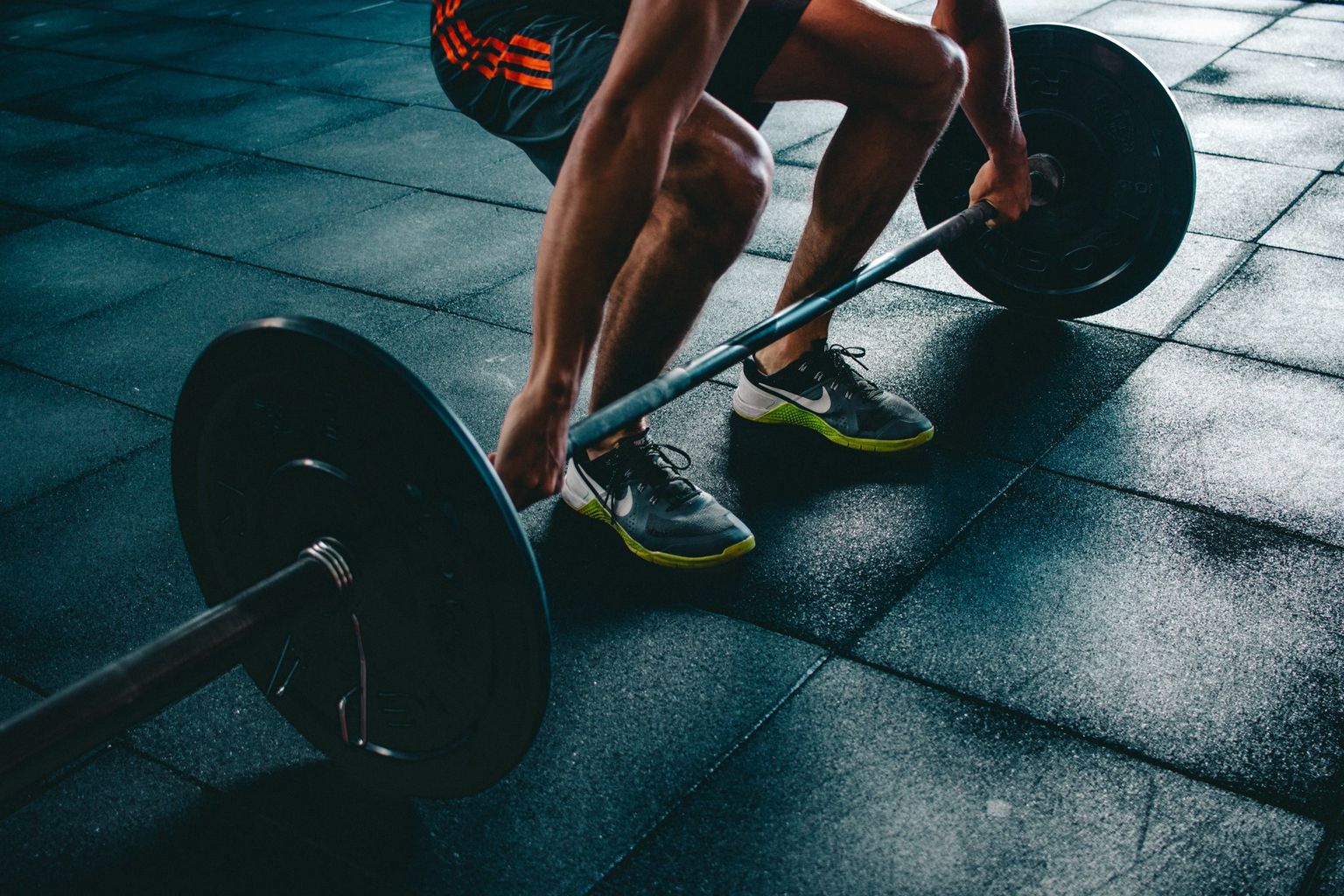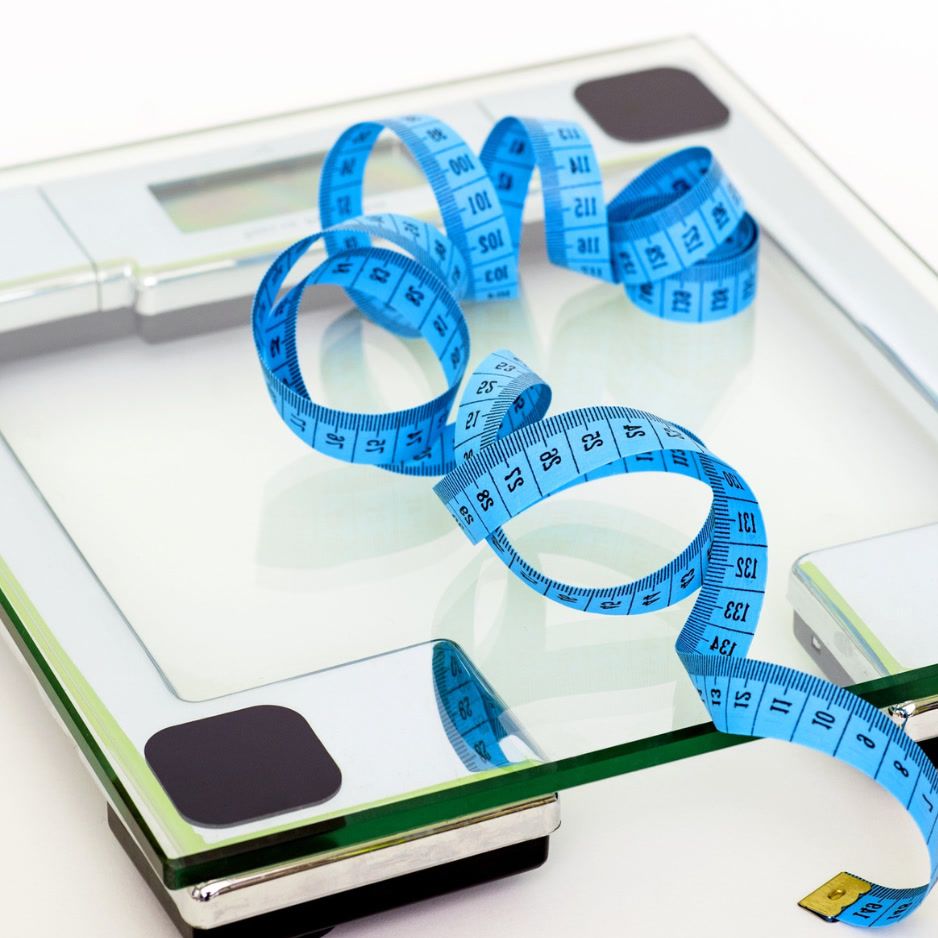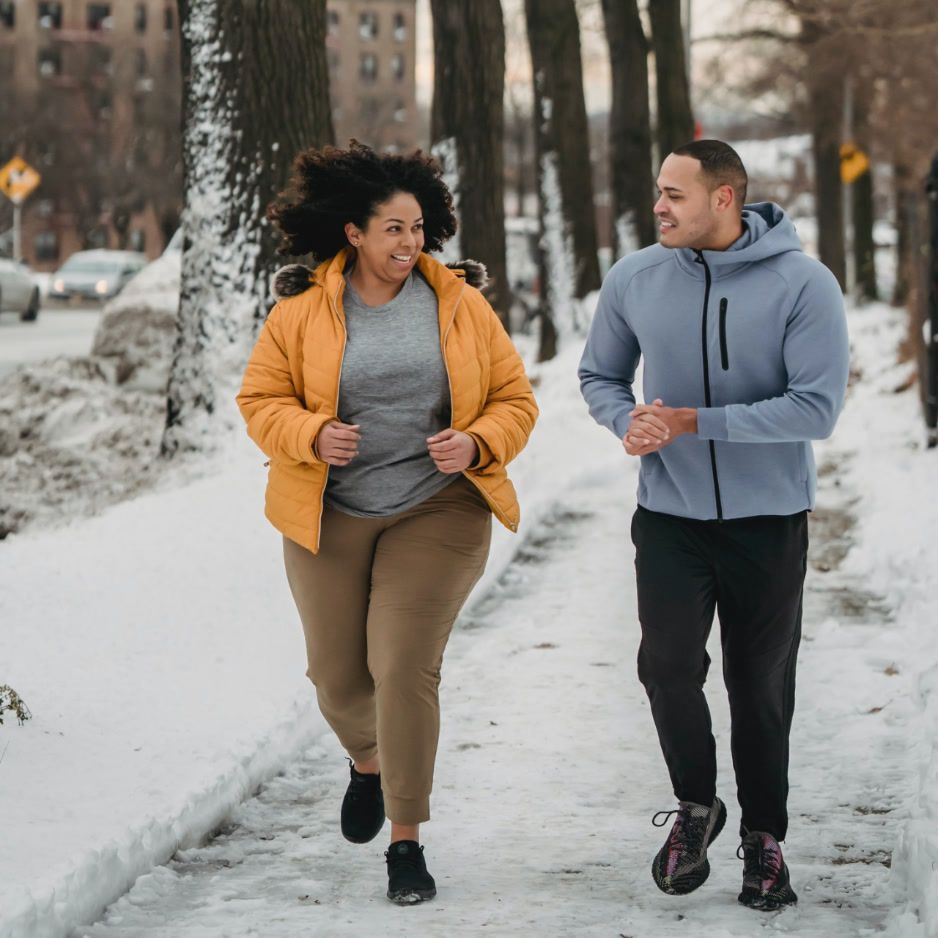Plyometrics Guide: Benefits, Exercises & Safe Workouts
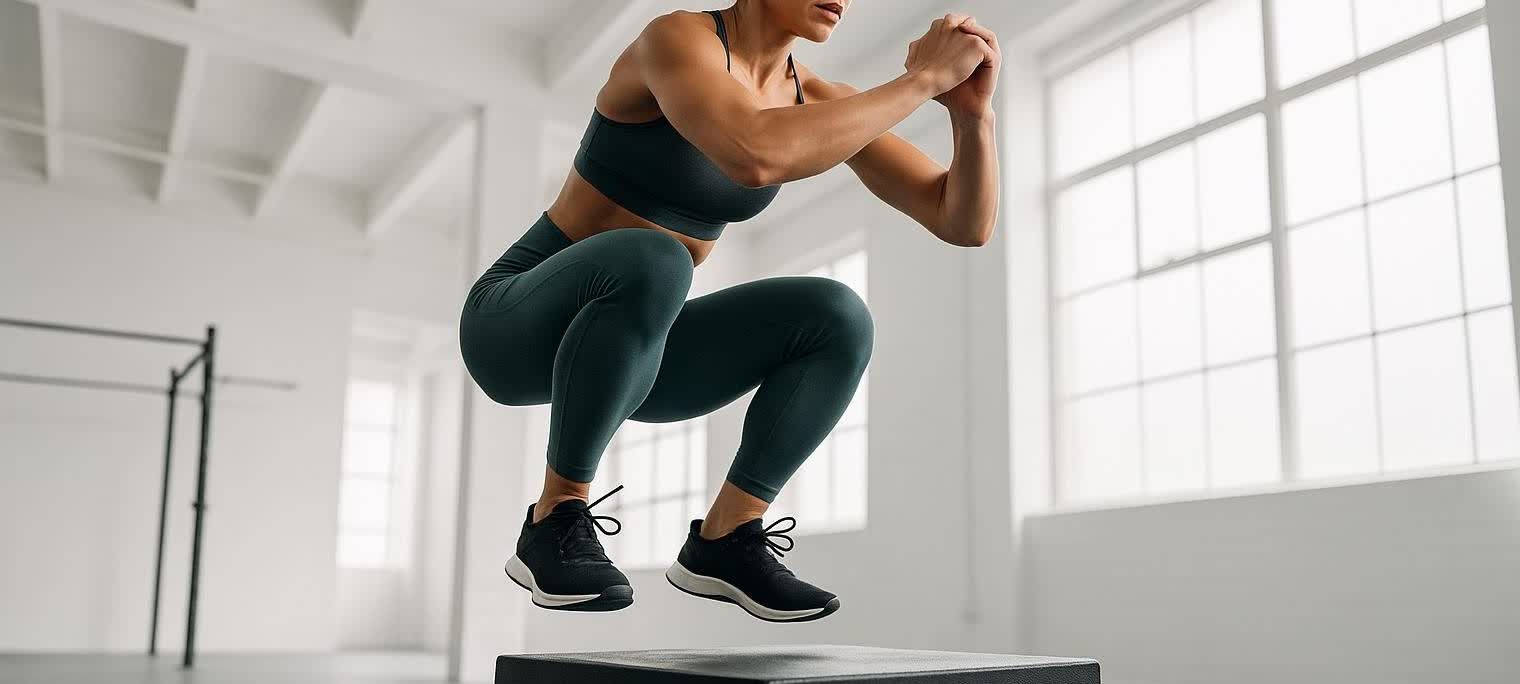
Plyometrics Guide: Benefits, Exercises & Safe Workouts
Plyometrics—often called “jump training”—packs maximum muscle activation into minimal time by harnessing the body’s natural spring-loading mechanism. Whether your goal is touching a basketball rim, sharpening agility for weekend pickleball, or future-proofing your bones, smart plyo programming can deliver explosive results. This guide breaks down the science, benefits, and step-by-step routines for every fitness level.
Quick Definition
Plyometrics is a training style that pairs a rapid muscle stretch (eccentric phase) with an immediate explosive contraction (concentric phase) to generate maximal power according to WebMD.
In plain English: you squat down to load the spring and then launch upward before that stored energy escapes.
How Plyometrics Works: The Stretch–Shortening Cycle (SSC)
When you drop into a half-squat, elastic tissues store energy like a compressed spring. Pause too long and the “spring” leaks; pop back up quickly and that stored energy super-charges your jump. This reflexive chain is the stretch–shortening cycle.
| SSC Phase | What Happens | Real-Life Example |
|---|---|---|
| 1. Eccentric (loading) | Muscle lengthens under tension, storing elastic energy. | Descending into a squat before a jump |
| 2. Amortization (transition) | The brief moment between stretching and contracting—this phase must stay short to prevent energy loss. | The quick “dip” just before take-off |
| 3. Concentric (unloading) | Muscle contracts powerfully, releasing stored energy. | Leaving the ground on a jump |
Keeping this transition quick preserves stored energy; Harvard Health notes that longer pauses let it dissipate.
Evidence-Based Benefits of Plyometrics
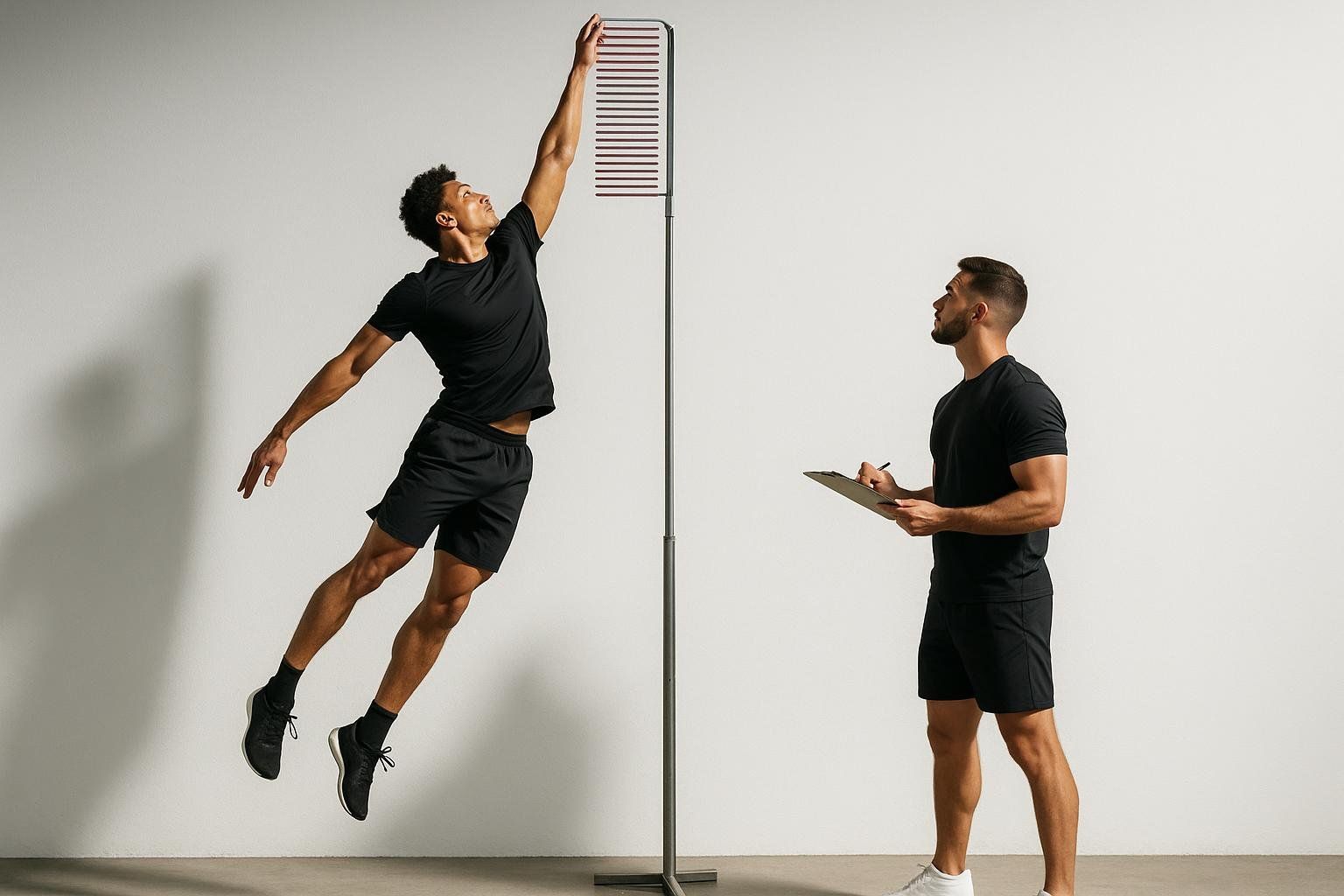
1. Explosive Power & Athletic Performance
Even in adults aged 58–79, a systematic review found that well-designed plyometric blocks increased vertical jump height by 4–11 cm and improved sprint times in as little as six to eight weeks—highlighting just how potent this training can be across age groups.
2. Stronger Bones
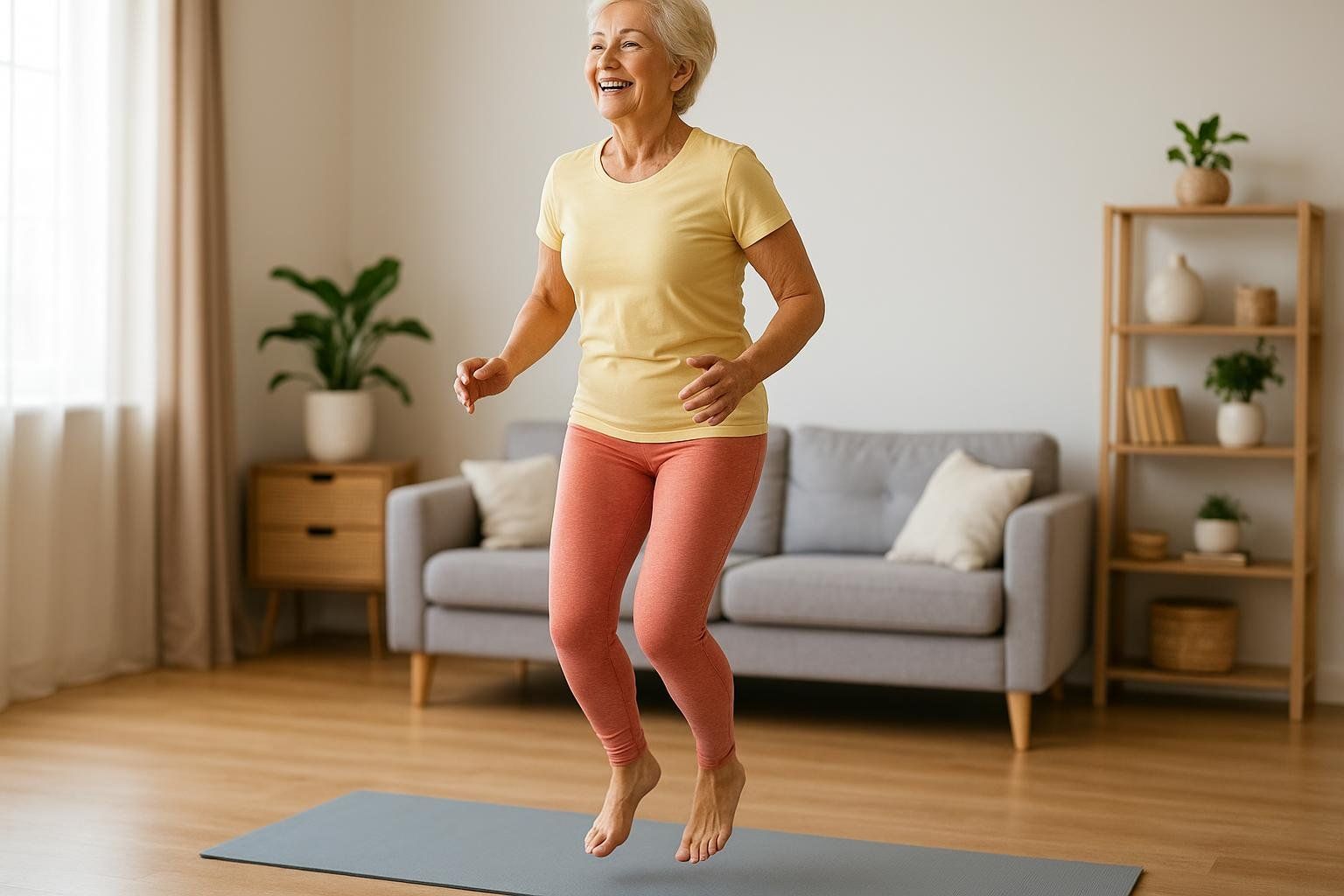
Repeated ground-reaction forces stimulate bone-building cells (osteoblasts). In adolescents and older adults, research shows that 12–52 weeks of jump training can lead to significant gains in lumbar-spine bone mineral density.
3. Better Balance & Coordination
Quick ground contacts train proprioceptors, which the cited systematic review found to cut fall risk in seniors by up to 22 percent.
4. Metabolic Boost
Because plyometrics is high-intensity and recruits large muscle groups quickly, it elevates heart rate and oxygen demand fast—making it a time-efficient way to burn calories and improve cardiovascular fitness.
Who Should (and Shouldn’t) Do Plyometrics?
| Green Light | Yellow Light | Red Light |
|---|---|---|
| Athletes seeking power | Beginners with no strength base | Active injury |
| Recreational exercisers wanting variety | Adults > 55 with joint issues | Uncontrolled heart, bone, or metabolic disease |
| Post-rehab clients cleared for impact | Pregnant individuals | Severe balance disorders |
Always clear new high-impact training with a medical professional if you have health conditions.
Safety First: Risk–Reward Checklist
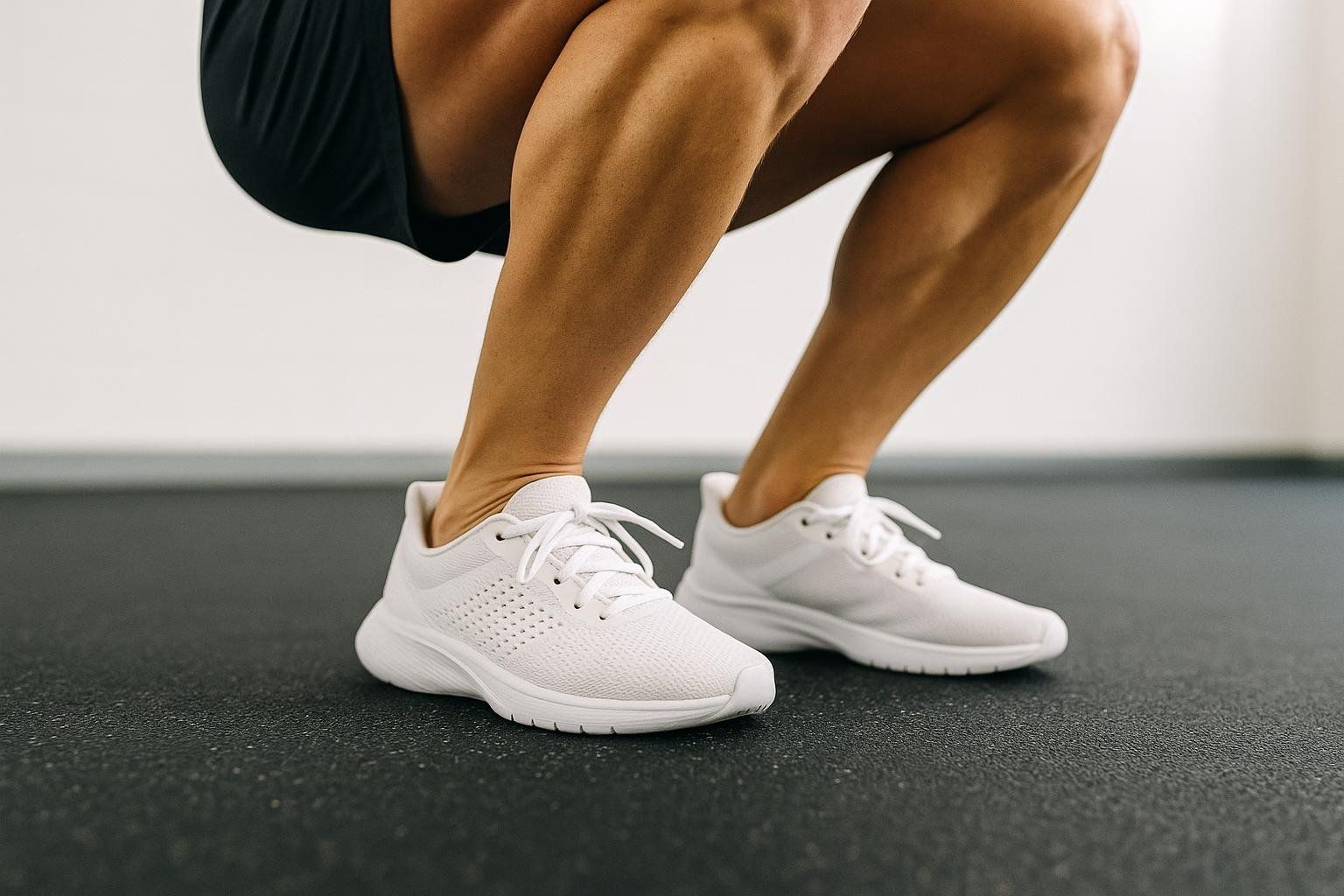
- Strength Foundation – Hit the basics first (e.g., body-weight squat × 15 with perfect form).
- Warm-Up – Five minutes of light cardio + dynamic mobility.
- Surface Matters – Use grass, rubber flooring, or thick mats.
- Soft Landings – Land toes–ball–heel, knees tracking over toes.
- Volume Control – Start with 60 or fewer ground contacts per session (about five minutes of work).
- 48-Hour Recovery – Plyo on non-consecutive days.
- Progression – Increase height or complexity, not both at once.
Need more joint-friendly ideas? See our Low-Impact Cardio Guide.
Plyometric Exercises by Body Region
Lower Body Classics
| Exercise | How-To Tips | Reps |
|---|---|---|
| Squat Jump | Sit back into hips, swing arms, explode up, and land softly. | 8–10 |
| Lateral Bound | Leap side-to-side, stick the landing softly with knee aligned. | 6/side |
| Box Jump | Jump onto 12–24-inch box, land fully on box, step down gently. | 5–8 |
Upper-Body Power
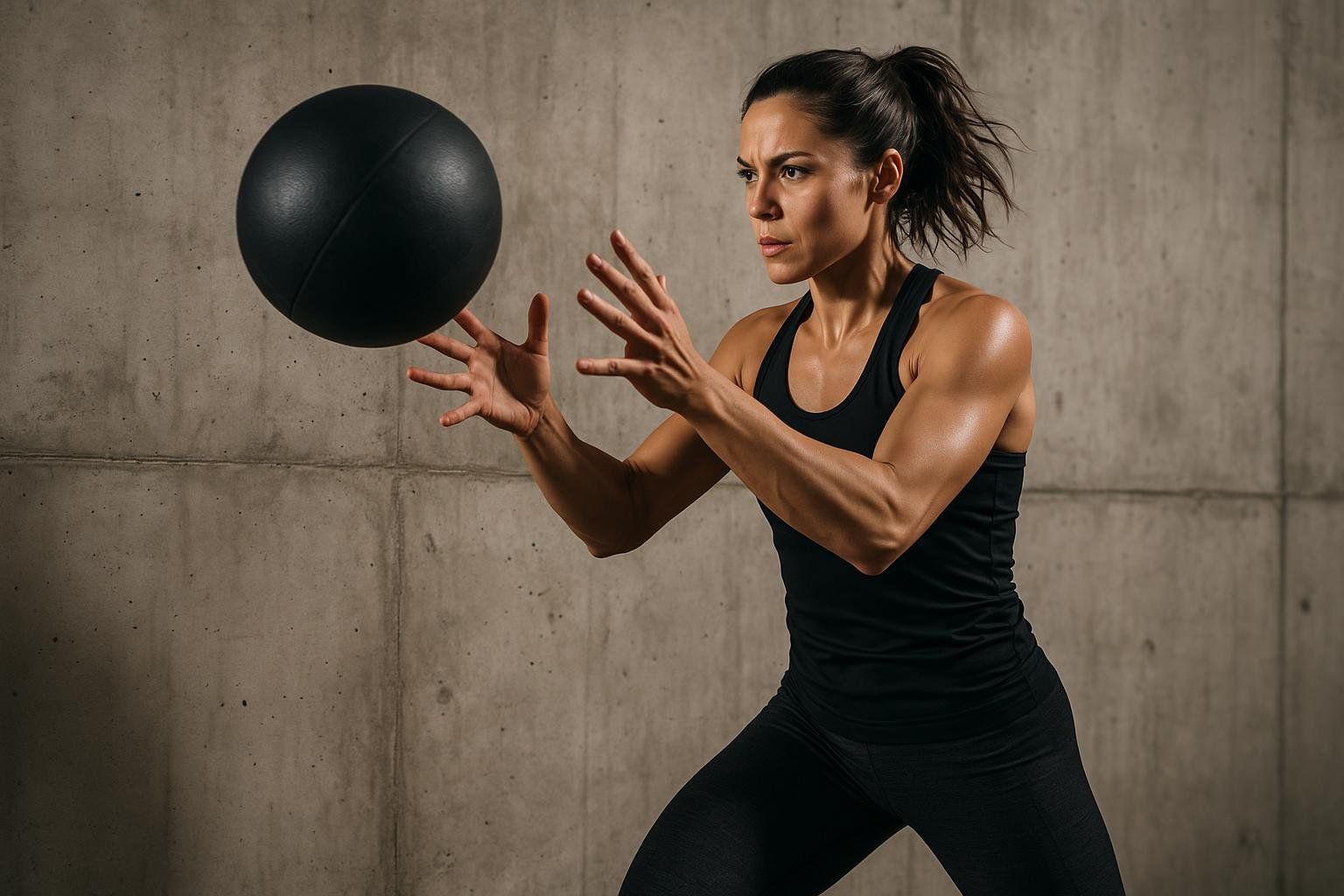
| Exercise | How-To Tips | Reps |
|---|---|---|
| Clap Push-Up | Lower fast, push so hands leave floor; cushion return with bent elbows. | 5–8 |
| Medicine-Ball Chest Pass | Throw 4–8 lb ball forcefully at wall, then catch softly in front of chest. | 8–10 |
Core & Full-Body Combos
| Exercise | How-To Tips | Reps |
|---|---|---|
| Tuck Jump | Drive knees to chest mid-air and land softly with hips back. | 6–8 |
| Burpee Broad Jump | Perform a burpee, leap forward, land softly, reset stance. | 6 |
Ready-Made Routines
Beginner Low-Impact Routine
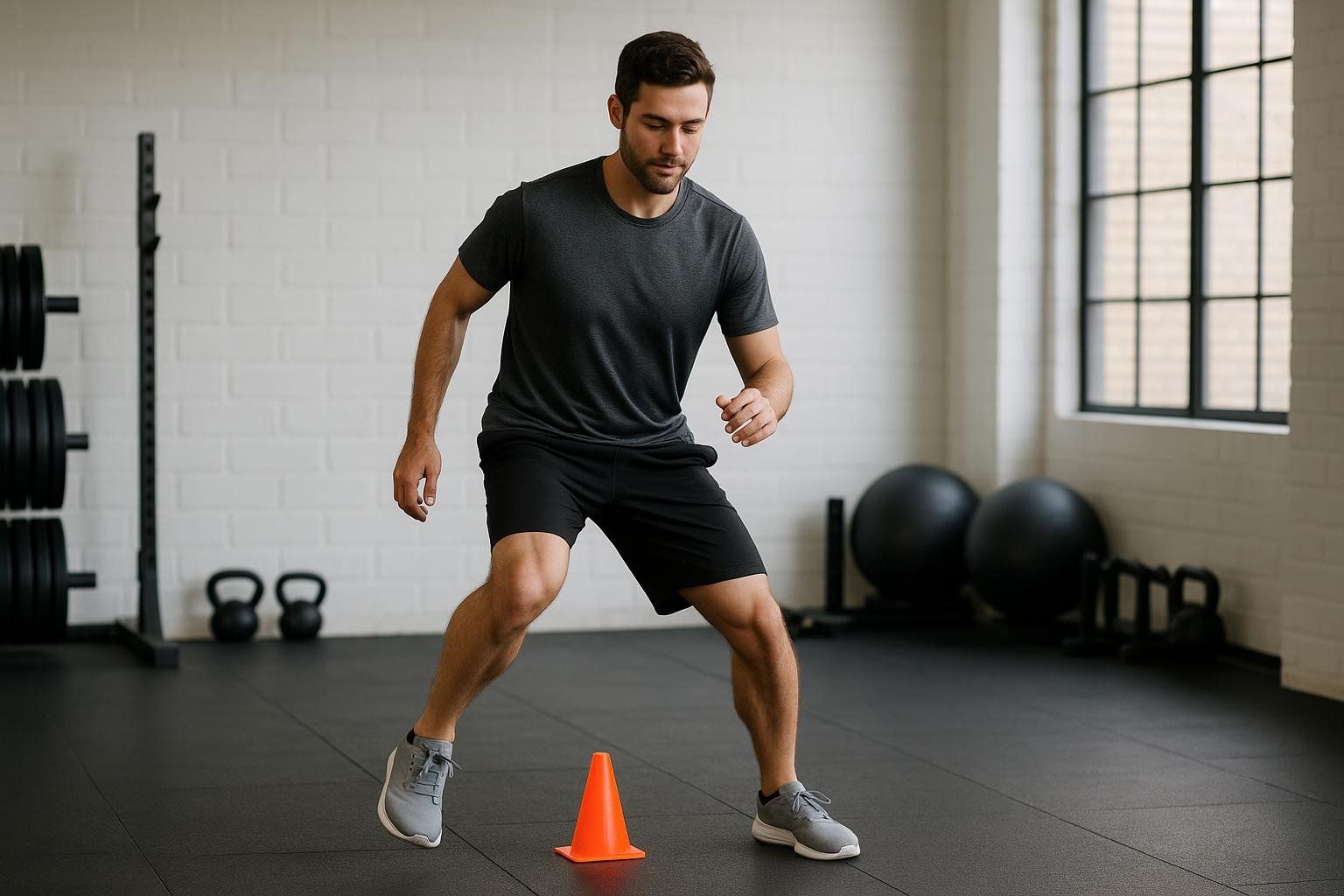
| Move | Sets × Reps |
|---|---|
| Marching in Place (warm-up) | 1 × 60 s |
| Mini Squat Jump (8–12″) | 2 × 6 |
| Side Step-Over on Low Cone | 2 × 8/side |
| Jump Rope (slow) | 2 × 30 s |
| Cool-Down Walk | 3 min |
Frequency: two days per week, 48-hour rest.
Athletic Power Program
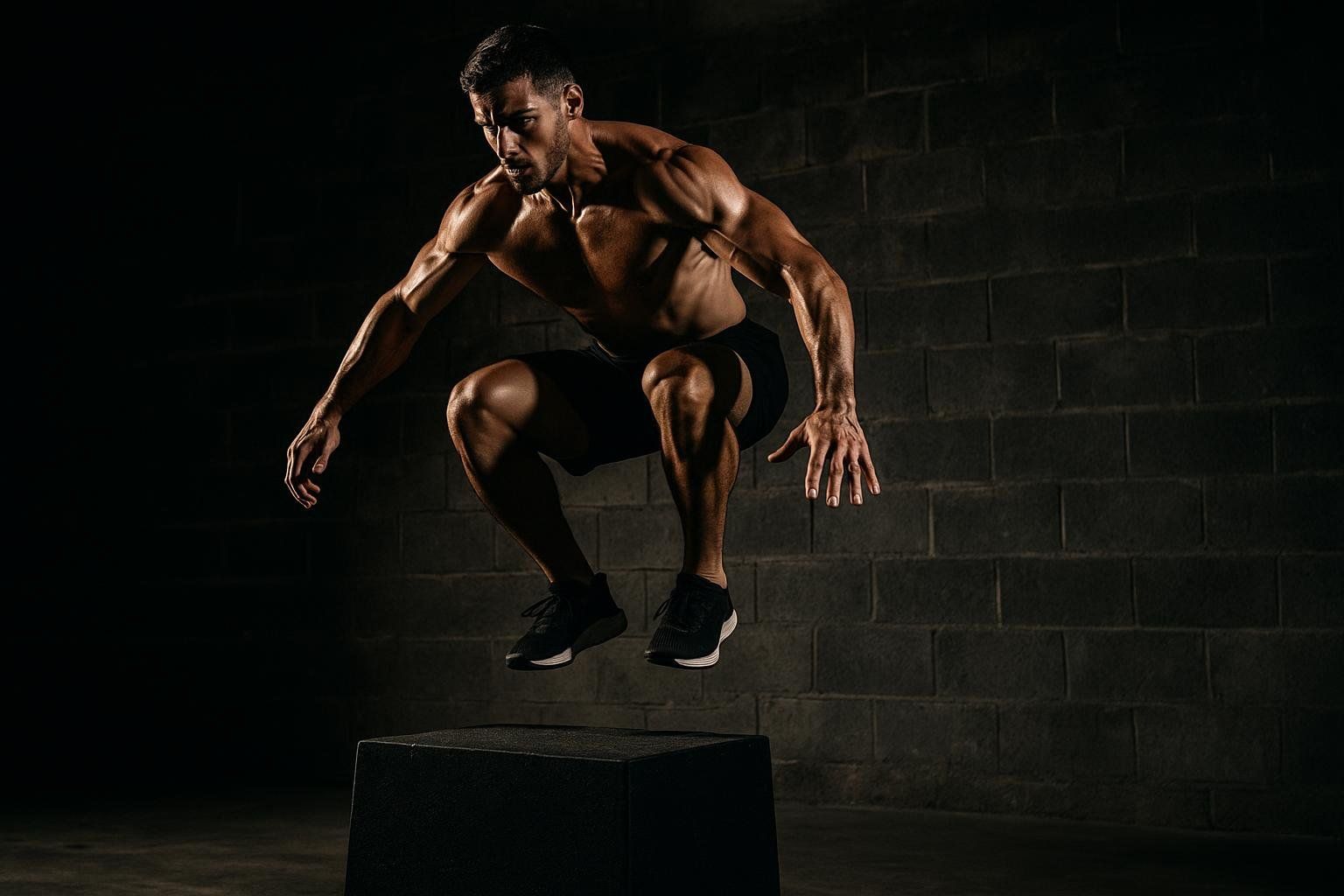
| Move | Sets × Reps |
|---|---|
| Depth Jump (18″ box) | 3 × 5 |
| Broad Jump | 3 × 6 |
| Split-Squat Jump | 3 × 5/leg |
| Plyo Push-Up | 3 × 6 |
| Medicine-Ball Slam | 3 × 8 |
Frequency: two to three days per week, paired with strength workouts.
Joint-Friendly 55+ Routine
| Move | Sets × Reps |
|---|---|
| Seated Banded Leg Extensions (prep) | 2 × 10 |
| Small Step-Up Hop (4″ step) | 2 × 6/leg |
| Medicine-Ball Chest Pass (6 lb, catch softly) | 2 × 8 |
| Heel-Raise Hop (onto yoga mat) | 2 × 8 |
| Balance Reach (cool-down) | 2 × 30 s/side |
Frequency: one to two days per week; consider working with a trainer when starting.
Tracking Progress
- Vertical Jump Test: Measure reach, then jump and record the difference.
- Reactive Strength Index (RSI): A ratio of jump height to ground-contact time, typically measured with force plates or jump mats used by coaches.
- DEXA scan: Quantify increases in lean mass and monitor bone density improvements at key milestones.
Frequently Asked Questions
Can beginners do plyometrics safely?
Yes—start with low jumps, soft surfaces, and fewer than 60 total contacts. Master landing before increasing intensity.
How often should I train plyometrics?
Most people thrive on one to three sessions per week with 48 hours between sessions.
Do I need equipment?
Not necessarily. Body-weight and common items like a sturdy step or light medicine ball work fine. Boxes and timing mats add variety but aren’t mandatory.
Will plyometrics make me “bulky”?
Generally, no. Plyos emphasize neural drive and power, not muscle size. Pair with strength work if hypertrophy is a goal.
Is plyometrics good for weight loss?
Indirectly. High calorie burn plus lean-mass retention can support a deficit. Combine with nutrition and resistance training for best results.
Key Takeaways
- Plyometrics leverages the stretch–shortening cycle for maximal force in minimal time.
- Benefits range from higher vertical leap to stronger bones and better balance.
- Safety hinges on controlled landings, progressive volume, and adequate recovery.
- Tailored routines allow every age and fitness level to tap explosive gains.
- Track improvements with jump tests and periodic BodySpec DEXA scans.
Further reading:
Ready to jump in? Schedule your next DEXA scan and watch your power metrics soar.
